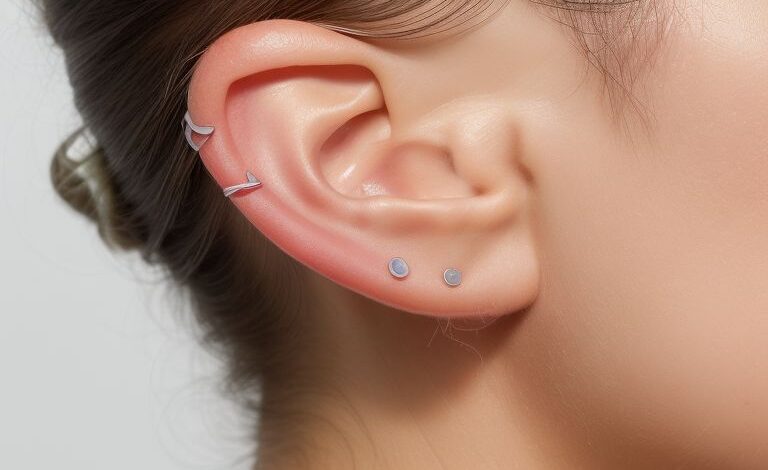Bump Inside Ear: Causes, Symptoms, Treatment, and Prevention

Bump Inside Ear: Causes, Symptoms, Treatment, and Prevention
Finding a bump inside your ear can be alarming. Many people experience this at some point in their lives. While most ear bumps are harmless, some may require medical attention. This article will walk you through everything you need to know about bumps inside the ear, including possible causes, symptoms to watch out for, treatment options, and prevention tips.
What Is a Bump Inside the Ear?
A bump inside the ear refers to any small lump, nodule, or swelling that forms in the ear canal or on the outer ear. These bumps can vary in size, shape, and texture. Sometimes they are painful, while other times they may not cause any discomfort.

Common Causes of Bumps Inside the Ear
There are several reasons why a bump might appear inside your ear. Below are some of the most common causes:
1. Ear Pimples (Acne)
Just like on your face or back, pimples can form inside the ear. Ear pimples occur when dirt, oil, or dead skin cells clog the pores in your ear. Hormonal changes, poor hygiene, or wearing dirty earbuds can contribute to acne in this area.
2. Sebaceous Cysts
Sebaceous cysts are non-cancerous, fluid-filled lumps that form under the skin. They usually develop in the ear due to the accumulation of oil (sebum) produced by sebaceous glands. These cysts may not hurt unless they become infected.
3. Infections
Infections, such as an ear canal infection (also known as otitis externa or swimmer’s ear), can cause bumps to form inside the ear. Bacteria and fungi can enter the ear and cause inflammation, leading to swelling and the development of lumps.
4. Allergic Reactions
Your ear can also develop a bump as a result of an allergic reaction to hair products, ear jewelry, or ear drops. The skin inside your ear may become irritated, leading to swelling or the formation of a small bump.
5. Trauma or Injury
If you have scratched your ear or inserted something sharp, like a cotton swab, it may cause trauma, leading to a bump. Piercing the ear in a less-than-ideal environment can also lead to bumps as part of the healing process.
6. Keloids
A keloid is a type of scar that results from an overgrowth of tissue after an injury, such as an ear piercing. Keloids are typically raised, shiny, and larger than the original wound. They can form inside or on the outer ear.
7. Abscesses
An abscess occurs when pus accumulates due to a bacterial infection. The result is a painful, red bump filled with pus. Abscesses can form in the ear after a pimple or cyst becomes infected.
8. Earwax Buildup
Sometimes, excessive earwax can harden and form a small lump inside the ear canal. This can lead to discomfort and even mild hearing loss. While earwax buildup isn’t necessarily a “bump,” it can feel like one.
Symptoms of a Bump Inside the Ear
The symptoms you experience will depend on the cause of the bump. Here are some common symptoms associated with ear bumps:
- Pain or tenderness: This can occur if the bump is infected or inflamed.
- Swelling: The area around the bump may swell or become red.
- Itching: You may feel a persistent itch inside the ear.
- Discharge: In the case of infections or abscesses, you may notice pus or fluid draining from the bump.
- Hearing loss: If the bump is inside the ear canal, it can block sound, causing temporary hearing difficulties.
- Fever: If the bump is due to an infection, you may develop a fever as your body fights off the bacteria or virus.
If your bump is painful, growing, or not going away, it's important to seek medical attention.
Diagnosing a Bump Inside the Ear
To diagnose the cause of a bump inside your ear, a healthcare provider will likely:
- Take a medical history: They’ll ask you about any recent injuries, infections, or ear piercings.
- Examine the bump: Using an otoscope, your doctor will closely inspect the bump and the surrounding tissue.
- Run additional tests (if needed): If the bump looks concerning, they may order tests like a biopsy or imaging scans to rule out more serious conditions, such as tumors.
Treatment Options for a Bump Inside the Ear
The treatment for a bump inside your ear will depend on the cause. Below are some common treatments:
1. Over-the-Counter Medications
For minor bumps caused by pimples or irritation, over-the-counter treatments can help. Topical acne creams with ingredients like salicylic acid or benzoyl peroxide can reduce pimples inside the ear. Antihistamines can help if the bump is due to an allergic reaction.
2. Warm Compresses
A warm compress can reduce pain and swelling. It’s particularly helpful for pimples, sebaceous cysts, or small abscesses. Apply the compress for about 10-15 minutes a few times a day to encourage the bump to drain naturally.
3. Prescription Medications
If an infection is causing the bump, a doctor may prescribe antibiotics or antifungal medications, depending on the type of infection. For more severe acne, prescription-strength topical creams may be recommended.
4. Drainage
If the bump is large or painful, such as with an abscess or a large cyst, your doctor may need to drain it. This involves using a sterile needle to puncture the bump and release the fluid inside.
5. Corticosteroid Injections
Keloids or other scar tissue that form bumps inside the ear can be treated with corticosteroid injections. These injections help reduce inflammation and shrink the keloid over time.
6. Surgery
In rare cases, if the bump is persistent or concerning (such as a tumor), surgery may be necessary to remove it. This is often done under local anesthesia and is a quick outpatient procedure.
7. Earwax Removal
If earwax buildup is causing a lump inside the ear, a doctor can safely remove the excess earwax using special tools or ear irrigation (flushing the ear with water).
Home Remedies for Bumps Inside the Ear
While it’s always a good idea to consult a doctor for unusual bumps, some home remedies may help ease mild discomfort or reduce the appearance of small bumps inside the ear.
1. Warm Water and Soap
Keep the ear clean by washing the outer ear with warm water and mild soap. Avoid using cotton swabs, as they can push dirt and bacteria further into the ear.
2. Aloe Vera Gel
Aloe vera has soothing and anti-inflammatory properties. You can apply a small amount of aloe vera gel to the outer ear to help reduce irritation and swelling.
3. Tea Tree Oil
Tea tree oil has antibacterial properties. Dilute a few drops of tea tree oil with a carrier oil (like coconut oil) and apply it to the bump using a cotton swab. Be cautious when applying oils near the ear canal, and never pour it directly inside.
4. Garlic Oil Drops
Garlic has natural antimicrobial properties. Some people use garlic-infused oil as a home remedy for ear infections. Warm the oil slightly (not hot) and apply a few drops to the outer ear for relief.
When to See a Doctor
Most bumps inside the ear are harmless and will go away on their own or with simple treatments. However, it’s important to see a doctor if:
- The bump persists for more than a week.
- The bump is painful, growing, or changes color.
- There is discharge from the ear (especially if it’s pus).
- You experience hearing loss.
- You develop a fever.
A healthcare provider can determine the underlying cause and recommend appropriate treatment.
How to Prevent Bumps Inside the Ear
Taking steps to maintain good ear hygiene can help prevent bumps from forming inside the ear. Here are some tips to keep your ears healthy:
1. Keep Your Ears Clean
Clean your ears regularly with a washcloth and avoid sticking objects, like cotton swabs, into the ear canal. Let earwax work its way out naturally, as it helps protect your ear from infections.
2. Avoid Dirty Earbuds and Earplugs
If you frequently use earbuds or earplugs, be sure to clean them regularly. Dirty earbuds can introduce bacteria into the ear, leading to infections and bumps.
3. Limit Ear Piercings
While ear piercings are popular, too many can increase the risk of infections and keloids. Always get piercings done at a reputable place, and follow aftercare instructions to prevent bumps.
4. Stay Dry
Excess moisture in the ear can lead to infections like swimmer’s ear, which causes swelling and bumps. Dry your ears thoroughly after swimming or showering.
5. Watch for Allergies
If you know certain products irritate your skin, avoid using them around your ears. Be mindful of hair products, ear jewelry, and ear drops that could cause an allergic reaction.
A bump inside your ear can be caused by many things, from harmless pimples to more serious infections. While most ear bumps are treatable with simple remedies or medications, it’s important to pay attention to any changes. If the bump doesn’t improve or worsens, a visit to a healthcare provider is recommended.
By following good ear hygiene practices and taking steps to prevent infections, you can minimize your chances of developing ear bumps. Remember, your ears are sensitive, so treat them with care!


